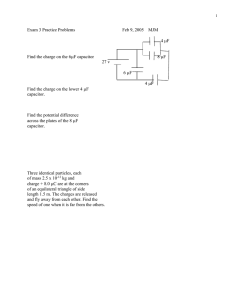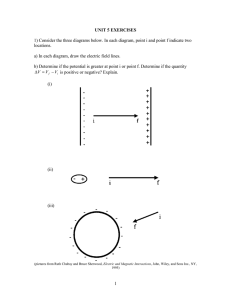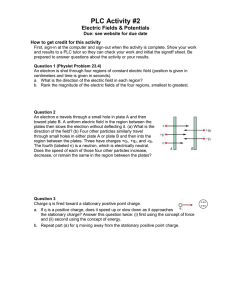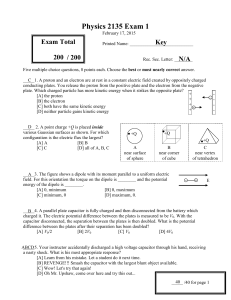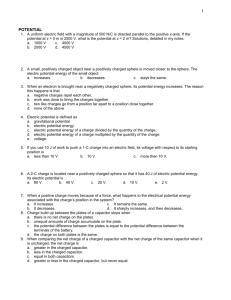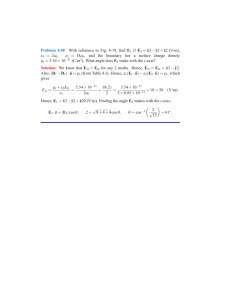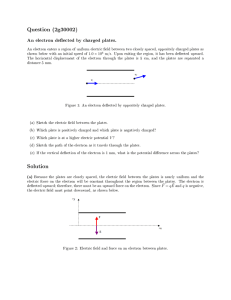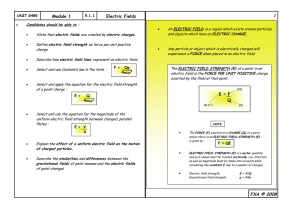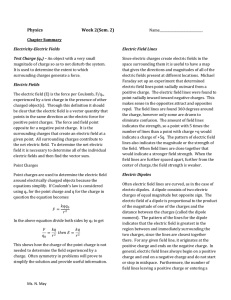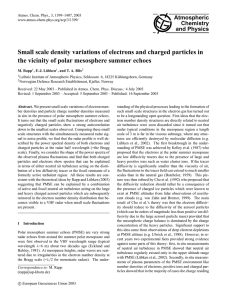Problem 4.54 An electron with charge Qe
advertisement
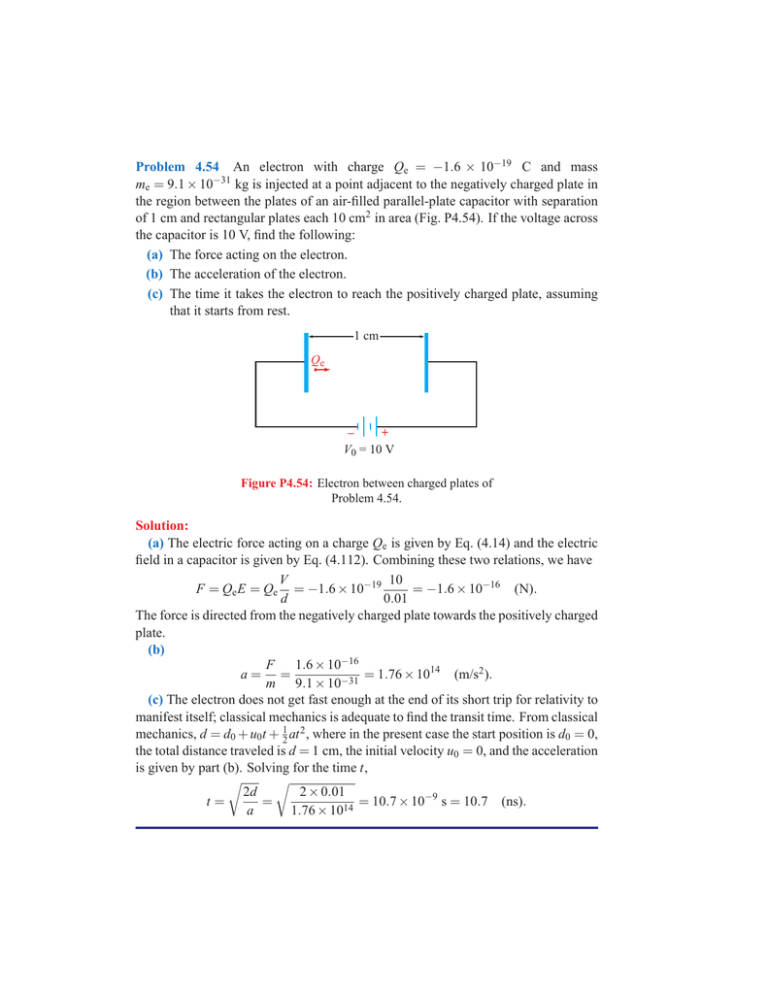
Problem 4.54 An electron with charge Qe = −1.6 × 10−19 C and mass me = 9.1 × 10−31 kg is injected at a point adjacent to the negatively charged plate in the region between the plates of an air-filled parallel-plate capacitor with separation of 1 cm and rectangular plates each 10 cm2 in area (Fig. P4.54). If the voltage across the capacitor is 10 V, find the following: (a) The force acting on the electron. (b) The acceleration of the electron. (c) The time it takes the electron to reach the positively charged plate, assuming that it starts from rest. 1 cm Qe – + V0 = 10 V Figure P4.54: Electron between charged plates of Problem 4.54. Solution: (a) The electric force acting on a charge Qe is given by Eq. (4.14) and the electric field in a capacitor is given by Eq. (4.112). Combining these two relations, we have V 10 F = Qe E = Qe = −1.6 × 10−19 = −1.6 × 10−16 (N). d 0.01 The force is directed from the negatively charged plate towards the positively charged plate. (b) F 1.6 × 10−16 a= = = 1.76 × 1014 (m/s2 ). m 9.1 × 10−31 (c) The electron does not get fast enough at the end of its short trip for relativity to manifest itself; classical mechanics is adequate to find the transit time. From classical mechanics, d = d0 + u0t + 21 at 2 , where in the present case the start position is d0 = 0, the total distance traveled is d = 1 cm, the initial velocity u0 = 0, and the acceleration is given by part (b). Solving for the time t, r r 2d 2 × 0.01 = = 10.7 × 10−9 s = 10.7 (ns). t= a 1.76 × 1014
